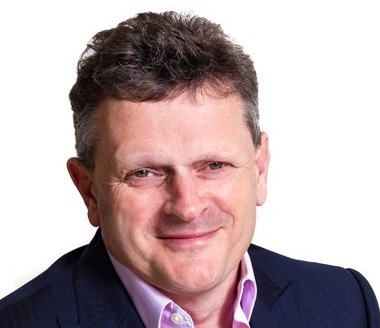Building on the report I wrote earlier in the year and the webinar we ran on People With Disability (PWD) in July, MEF CONNECTS Omnichannel presented an opportunity to take the discussion to another level.
We got a lot of enthusiastic interest from telcos and suppliers alike but only Google stepped up to join me on stage to discuss the topic. Christopher Patnoe has recently relocated to London from his California role of heading up accessibility. The move is intended to broaden Google’s understanding of how accessibility is shaping up in Europe, the Middle East and Africa.
Watch the Panel in full
Different communication channels supporting all customers have become known as ‘omnichannel’ by the telecoms and associated industries. Rather than thinking about it from the technology perspective, the focus of our fireside chat was to shift the emphasis to the people concerned and what ‘intent’ is behind the interactions i.e. what the customer is trying to achieve.
This helps put omnichannel into a very clear context when it comes to PWDs. Some channels are cut off permanently. So for instance if someone is hearing or vision impaired or has motor or cognitive issues, forcing them to go to the telco’s preferred digital channel may not be optimum. Language is another key differentiator and ‘sign language’ (in its many forms) should be considered alongside all the usual suspects to make the experience as clean and fruitful as possible. In fact, thinking about the full spectrum of where and when and how people interact with your organisation (or your customer’s organisation), helps build a more inclusive future for all.
Hence it is important to consider how the physical retail outlet is set up, what skills are available through people as well as systems and the specialist knowledge in contact centres with people who are trained around PWDs’ requirements. Identification is needed of the PWD and any specialist needs through systems (within the rules of GDPR, of course). Leveraging Artificial Intelligence and Machine Learning to bring as much knowledge as possible into the system will only enhance the experience.
The main lesson learned from the research and continued interaction with the industry and the community of PWDs is to be absolutely sure to build accessibility into the design and revision process from scratch. Employing PWDs in all areas of the business will enrich the culture of your organisation as well as bring that knowledge into the way you build an experience for everyone.
Having said it shouldn’t start with the technology as in previous generations, the technology is there to build a fantastically rich experience for PWDs and indeed everyone. This now runs the full gamut from the chips at the heart of smart devices, through to allowing hopping and translating between messaging and interaction channels, out into the cloud and access to the unbelievable wealth of information available to support everyone’s lives. What is key is that we don’t get sucked down into thinking about one technology, one disability or one application.
Thinking about this holistically will help all parties build more effective, simpler but richer applications and experiences for everyone. I have a mantra that this new design paradigm actually benefits everyone.
As a blind person I dream of the disappearance of clunky cluttered web sites, mobile apps that leave my head spinning and searches that take me down endless rabbit holes out there in the Ether. Build accessibility into your processes from the get-go and you will find your business truly delivering an excellent experience to customers across all channels.
We have after all been talking about ‘personalisation’ of services for decades. This is the ultimate customisation of immersive services to enhance everybody’s lives. And finally, think of all of the touch points for the individual: mobile device, smart speaker, television, laptop and doubtless robots of many types in the future – all will come with their omnichannel opportunities. Design transcends the device, the operating system, the service and the content.
As a final thought, Christopher also quoted Rama Gheerawo, Director of the Helen Hamlyn Centre at the Royal College of Art who said: “Designing for the edges gives you the centre for free”. This, coming from the world of design is a reminder that our technology lens on life needs to be set in a broader context. And, designing for those on the ‘edge’ with peripheral requirements to the norm will also include the mainstream customer for free. You can see one of Rama’s presentations here.
MEF CONNECTS Omnichannel – Available on Demand Now
Watch all two days of sessions from MEF CONNECTS Omnichannel now – MEF Members get exclusive access to additional content including presentation materials and slide-decks.






